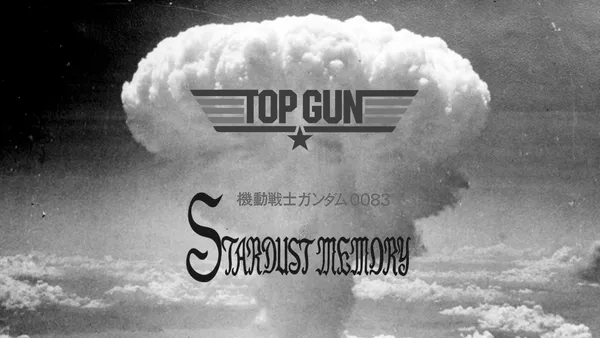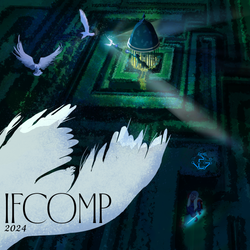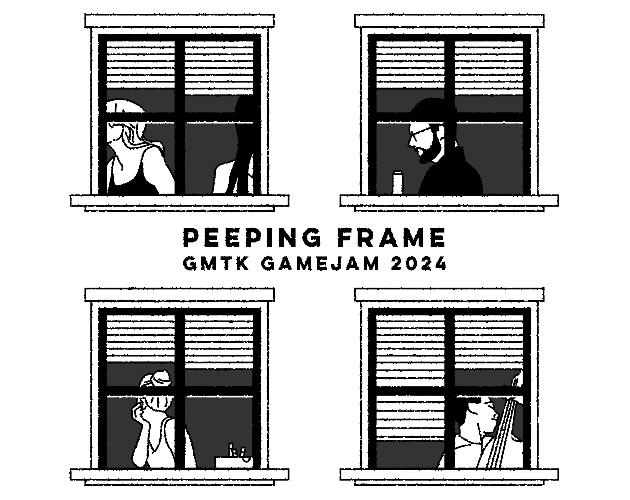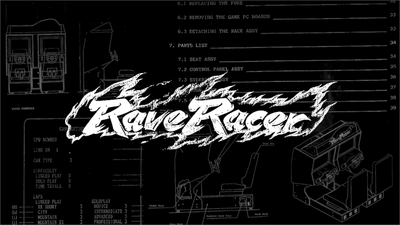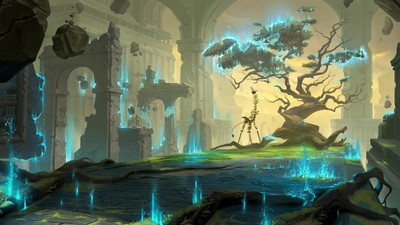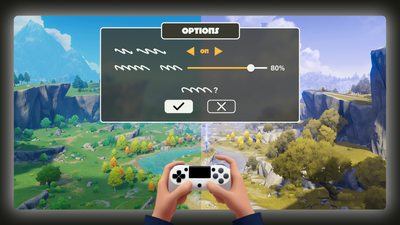Top Gun in the Hands of Giant Robots is a series of articles discussing the influence of the film Top Gun on the mecha genre. In this article, we'll look at the movie's impact on a lesser-known entry in the Mobile Suit Gundam universe, Stardust Memory.
Back in the Paleolithic Era (give or take) when public libraries still let you rent VHS tapes, I'd peruse their gargantuan shelves for something cool to watch. Some of the librarians were geeks so they had a decent selection of anime titles, one in particular being a tape with the first 2 episodes of Mobile Suit Gundam 0083: Stardust Memory. This would become one of the first mecha shows I ever watched and my favorite Gundam show, with the bulked-up Physalis as my all-time top Gundam.
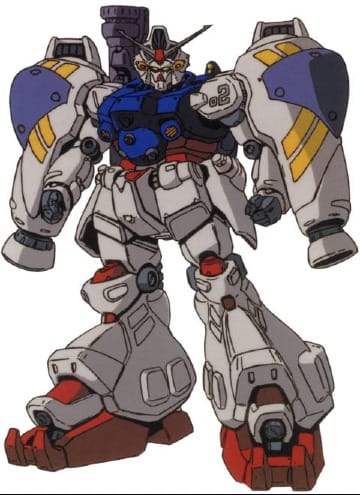
Stardust Memory is, on the surface level, about a young Earth Federation soldier piloting a powerful mech prototype, referred to as a Gundam, and chasing after its counterpart Gundam stolen by remnants of the Principality of Zeon. On a deeper level, it's about an uneasy post-war peace being shattered by the prospect of nuclear destruction and the self-consuming anger that fuels devastation.
I find it ironic in hindsight that I saw 0083, a then-obscure show, without having seen Top Gun, a certified All-American classic. For those of you who haven't seen it yet, Top Gun is a late Cold War-era action-drama about a fighter pilot attending an elite piloting academy and fighting an unnamed Communist threat. Despite being glorified propaganda for the U.S. war machine, it's one of the coolest films you'll ever see. Dynamic shots of mid-air dogfights coupled with a young Tom Cruise playing a cocky yet lovable protagonist make for a fun time. Yeah, the Navy tried to make itself look good with its involvement in the film. But you know what? It did a good job of it.
It's no surprise then that Sunrise, the company that produces the Gundam series, came out with a Gundam show influenced by Top Gun. The film's popularity in Japan is spoken for by its sequel staying in theaters for at least a year and remaining one of the country's highest-grossing films as of 2023. 0083 doesn't shy away from its primary influence and instead leans into it- Hard.
The most obvious indicator that this is a Top Gun-inspired story is the core cast. Gundam fans are used to teenage protagonists finding themselves in control of big robots. But in this case, our hero is Ensign Kou Uraki, an adult soldier (okay, he's 19) who's just as talented and reckless as his inspiration, Maverick. Young Uraki's best friend is a comedic blonde pilot named Chuck, who's like Maverick's own buddy Goose but dorkier and wears glasses. Both protagonists' love interests are intelligent blonde civilian women. Nina Purpleton is a talented engineer and creator of the show's featured Gundams while Charlie is an astrophysicist and teacher at the Top Gun academy.
In terms of characters, the most interesting deviation 0083 makes is its take on Maverick's rival, Iceman. Uraki's rival in the show is the main antagonist, Anavel Gato, whose abilities on the battlefield earned him the title "The Nightmare of Solomon". Iceman and Gato are both skilled pilots who recognize real talent but their characters couldn't be further apart. Iceman is a fellow Top Gun student with a large ego while Gato is a hardened war veteran who's fueled by vengeance against the Earth Federation. The dynamics of their respective rivalries are inverses of each other, with Maverick and Iceman sharing a classic school rivalry as classmates while Uraki and Gato are dead set on murdering each other as enemy combatants.
Despite taking heavy inspiration from Top Gun's characters, 0083 avoids being just another carbon copy by incorporating a unique plot element reflecting the zeitgeist of its era and the cultural trauma of Japanese culture: A weapon of mass destruction. One of the biggest implications in the story is that Zeon, an enemy nation defeated in a war prior to the start of the series, steals a Federation-made Gundam armed with a nuclear weapon. It's clear that this plot point reflects the Cold War era it came out of; 0083 was released in 1991, the same year when the Soviet Union collapsed. The threat of nuclear destruction was present in many media from this time period such as 1983’s WarGames and 1990’s The Hunt for Red October.
The use of a devastating weapon and its capability to take away an immense amount of lives is something the Japanese are well acquainted with. The atomic bombings of Hiroshima and Nagasaki left a deep scar in their cultural memory and would appear in other media such as 1988's Akira. Top Gun may be a heroic celebration of the American spirit and U.S. military prowess but 0083 is a somber reminder of the human cost of war, a thematic byline connecting it with the original Mobile Suit Gundam. It raises again the point that weapons aren't made for achieving peace but for inflicting violence upon those we perceive as different from us.
Differences aside, Top Gun's influence on 0083 can't be understated. On a surface level, both are about zooming around in your sick government-funded ride, saving the world, and getting the girl. The characters share enough similarities to the point where one would feel confident in forming a direct connection between the two casts. However, their divergent themes not only set them apart as separate stories but also cement their relationship as progenitor and successor. The tales of Maverick and Kou Uraki are tied together by their distinct perspectives on the shared topic of love and war. One just happens to be flying a fighter jet and the other a giant robot.
Justin's many things: Memer, designer, developer, game maker, Tarot reader, writer, and more. Now he's a keyboard monkey for Final Arc (don't tell them he said that). Website: heyjustinkim.com

